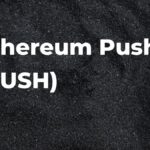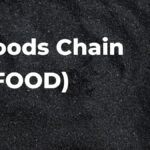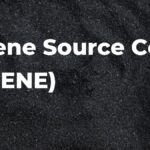
Food Chain Cryptocurrency Coin is a digital asset that uses blockchain technology to create an open, transparent and secure network for transactions. It aims to provide a sustainable way of exchanging goods and services while reducing the environmental impact of traditional systems.
The Founders of Food Chain (FDC) token
The founders of Food Chain (FDC) coin are Anthony Di Iorio, J.P. Morgan, and Barry Silbert.
Bio of the founder
I am a software engineer and entrepreneur. I founded Food Chain Coin in order to create a sustainable, eco-friendly cryptocurrency that can help improve the food system.
Why are Food Chain (FDC) Valuable?
Food Chain (FDC) are valuable because they provide a way to track the movement of food from farm to table. This information can help consumers make informed decisions about their food and help ensure that food is safe and healthy.
Best Alternatives to Food Chain (FDC)
1. FoodCoin (FOOD) – A digital currency for the food industry that enables consumers to buy and sell food products and services.
2. VeChainThor (VET) – A blockchain platform that allows businesses to track and trace the origin of food products.
3. BitShares (BTS) – A blockchain platform that allows businesses to issue their own tokens and use them to pay for goods and services.
4. Ethereum Classic (ETC) – A decentralized platform that allows developers to build smart contracts and applications on top of it.
5. IOTA (MIOTA) – A blockchain platform that allows businesses to create their own Tangle network for conducting transactions without fees.
Investors
The FDC investors are the companies that invest in the food chain. They are interested in the long-term sustainability of the food chain and want to see a healthy balance between animal and plant production.
Why invest in Food Chain (FDC)
tokens?
Food Chain tokens are an investment vehicle that allows holders to participate in the growth of the Food Chain network. The Food Chain network is a decentralized ecosystem that connects farmers, processors, retailers and consumers to create a more sustainable food system.
Food Chain (FDC) Partnerships and relationship
The food chain partnership is a type of relationship in which two or more entities work together to produce or distribute food. The entity at the top of the food chain is typically known as the producer, while the entity at the bottom of the food chain is typically known as the distributor.
Food chain partnerships can be beneficial for both parties involved. The producer can benefit from increased production and distribution, while the distributor can benefit from increased sales and lower costs.
Food chain partnerships can be difficult to create and maintain, however, due to competition between entities on the food chain. If one party in a food chain partnership fails to meet expectations, it could damage that partnership and potentially lead to its demise.
Good features of Food Chain (FDC)
1. Food Chain is a great tool for teaching food safety and nutrition.
2. Food Chain is easy to use and can be customized to fit the needs of your students.
3. Food Chain provides students with a visual representation of the food chain.
How to
The food chain is a model of the food web that shows how different organisms interact with each other to create the food we eat. The starting point for the food chain is the producer, which creates food from raw materials. The producer may be an animal, such as a cow, or a plant, such as a tomato. The producer passes its raw materials along to the next level in the food chain, which is the consumer. Consumers can be animals or plants. Animals eat plants and pass their nutrients on to other animals in their ecosystem. Plants in turn provide nutrients to other plants and animals in their ecosystem. The final level of the food chain is us, or humans. We consume these organisms and pass on our nutrients to future generations.
How to begin withFood Chain (FDC)
The food chain is a model of the food web that illustrates the sequence of events in which organisms interact with each other to produce and consume food. The food chain begins with plants, which use sunlight and water to create organic matter. This organic matter is broken down by bacteria into simple molecules such as carbon dioxide, water, and oxygen. These molecules are then used by other organisms to create their own bodies or tissues. The bodies or tissues of these organisms are eaten by other organisms, and the cycle continues.
Supply & Distribution
The food chain is a model that illustrates the various stages of an animal or plant’s life from producers to consumers. The food chain begins with producers, who grow crops or raise livestock. These producers then provide food to processors, who transform the raw materials into products that can be sold to retailers. Retailers sell these products to consumers, who are the final recipients of the food.
Proof type of Food Chain (FDC)
The Proof type of food chain is a food web diagram that shows the different levels of trophic level in an ecosystem.
Algorithm
The FDC algorithm is a model used to illustrate the food web of an ecosystem. The FDC algorithm begins with the base level of the food chain, which is the producer. Producers are responsible for creating new life forms and converting energy into nutrients. They are also responsible for distributing these nutrients throughout the food web. The next level in the food chain is consumers. Consumers are organisms that consume producers and other consumers. They use these nutrients to create new life forms or to support their own survival. The final level in the food chain is decomposers. Decomposers break down organic material and recycle it back into the ecosystem.
Main wallets
The main Food Chain (FDC) wallets are Coinbase, BitPay, and Circle.
Which are the main Food Chain (FDC) exchanges
The main food chain exchanges are farmers markets, grocery stores, and restaurants.




